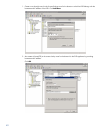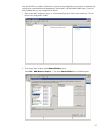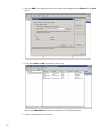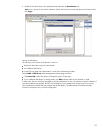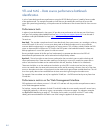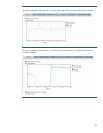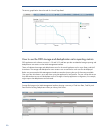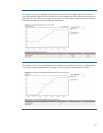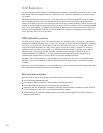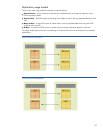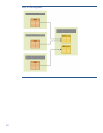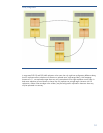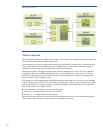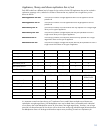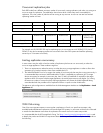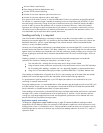
48
D2D Replication
The HP StorageWorks D2D products provide deduplication-enabled, low bandwidth replication for both VTL and
NAS devices. Replication enables data on a “replication source” D2D to be replicated to a “replication target”
D2D system.
Replication provides a point-in-time “mirror” of the data on the source D2D at a target D2D system on another
site; this enables quick recovery from a disaster that has resulted in the loss of both the original and backup
versions of the data on the source site. Replication does not however provide any ability to roll-back to previously
backed-up versions of data that have been lost from the source D2D. For example, if a file is accidentally deleted
from a server and therefore not included in the next backup, and all previous versions of backup on the source
D2D have also been deleted, those files will also be deleted from a replication target device as the target is a
mirror of exactly what is on the source device.
D2D replication overview
The D2D utilizes a propriety protocol for replication traffic over the Ethernet ports; this protocol is optimized for
deduplication-enabled replication traffic. An item (VTL Cartridge or NAS file) will be marked ready for replication
as soon as it is closed (or the VTL cartridge returned to its slot). Replication works in a “round robin” process
through the libraries and shares on a D2D; when it gets to an item that is ready for replication it will start a
replication job for that item assuming there is not already the maximum number of replication jobs underway.
Replication will first exchange metadata information between source and target to identify the blocks of
deduplicated data that are different; it will then synchronize the changes between the two appliances by
transferring the changed blocks or marking blocks for removal at the target appliance.
Replication will not prevent backup or restore operations from taking place. If an item is re-opened for further
backups or restore, then replication of that item will be paused to be resumed later or cancelled if the item is
changed.
Replication can also be configured to occur at specific times in order to optimize bandwidth usage and not affect
other applications that might be sharing the same WAN link.
Best practices overview
Use the D2D Sizing tool to accurately specify D2D appliance and WAN link requirements.
Avoid replicating appended backups.
Use replication blackout windows to avoid overlap with backup operations.
Use bandwidth throttling to prevent oversubscription of the WAN link.
Replication jobs may be paused or cancelled if insufficient WAN bandwidth is available. Limit the number of
concurrent replication jobs if only a small WAN bandwidth is available.
When creating a VTL replication mapping, select only the subset of cartridges that you need to replicate, for
example a daily backup.



